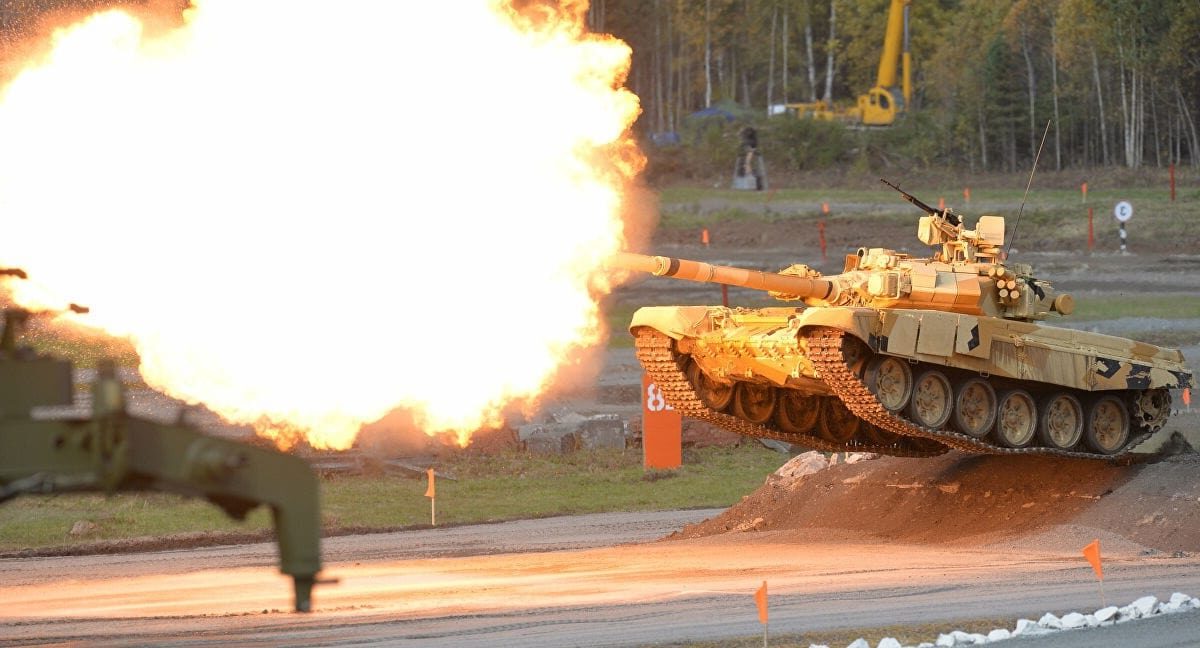Is the era of the tank coming to an end, as well as the power projection capabilities of the Russian Military? The war in Ukraine could provide some vital clues. It has been 128 days since the Russian invasion of Ukraine began. On Friday, the Russian forces are pushing hard in the Donbas and are advancing slowly and deliberately.
The battle for Lysychansk
Over the past 24 hours, the Russian forces have made gains in and around the Lysychansk oil refinery, which is located southwest of the Ukrainian city’s center. But this is just one of three Russian axes of advance from the south that aim to cut off the Ukrainian positions from their lines of communication and supply in the west.
A glance at the map below best describes the situation in the Donbas right now. However, although it seems that a sea of red threatens to flood the entire Donbas and trap the Ukrainian forces, the situation on the ground is not as dire for the Ukrainians as the map might suggest.
To be sure, the Russian forces have been advancing but at a very slow and deliberate pace, using heavy long-range fires to pave the way for their armor and mechanized infantry. But the Ukrainians are defending their positions fiercely, exacting a heavy price for every inch of ground the Russian forces capture.
On the south and north fronts, nothing significant has happened. The two sides are still embroiled in positional battles around Kharkiv, while the Ukrainian counteroffensive in the south has forced the Russians on the defense.
Russian casualties and Dead Tanks
Every day, the Ukrainian military is providing an update on their claimed Russian casualties. These numbers are official figures and haven’t been separately verified.
However, Western intelligence assessments and independent reporting corroborate, to a certain extent, the Ukrainian casualty claims. For example, the Oryx open-source intelligence research page has visually verified the destruction or capture of almost 800 Russian tanks; this assessment has been confirmed by the British Ministry of Defense.
The same independent verification exists for most of the other Ukrainian claims. Only recently the Pentagon acknowledged that the Russian military has lost thousands of combat vehicles of all types, including over 1,000 tanks, and dozens of fighter jets and helicopters.
Furthermore, more recent reports that are citing Western intelligence officials indicate that the Russian military has suffered up to 20,000 fatalities in the war so far.
It is very hard to verify the actual numbers unless one is on the ground. However, after adjusting for the fog of war and other factors the Western official numbers are fairly close to the Ukrainian claims.
As of Friday, the Ukrainian Ministry of Defense is claiming the following Russian casualties:
- 35,750 Russian troops killed (approximately three times that number wounded and captured)
- 3,736 armored personnel carriers destroyed
- 2,610 vehicles and fuel tanks
- 1,577 tanks
- 796 artillery pieces
- 645 tactical unmanned aerial systems
- 217 fighter, attack, and transport jets
- 246 Multiple Launch Rocket Systems (MLRS)
- 186 attack and transport helicopters
- 143 cruise missiles shot down by the Ukrainian air defenses
- 105 anti-aircraft batteries
- 61 special equipment platforms, such as bridging equipment
- 15 boats and cutters
- four mobile Iskander ballistic missile systems
Over the past weeks, the rate of Russian casualties has slowed down despite continuous pressure and offensive operations in the Donbas. This suggests two things: First, the Russian commanders are taking a more cautious approach to their offensive operations, fully utilizing combined arms warfare to achieve their goals; and second, the Ukrainian forces are running out of combat power or ammunition — and this is expected after over three months of war against the Russian military. Recent reports from the ground suggest that both of these factors are true, and that the fatigue of warfare is catching up on both sides.
For most of the last month, the Russian military suffered the greatest casualties around the Slovyansk, Kryvyi Rih, and Zaporizhzhia areas, reflecting the heavy fighting that was going on there. As the days went on, most of the heavy fighting shifted toward the direction of Bakhmut, southeast of Slovyansk, around Severodonetsk, a key Ukrainian town, and Lyman.
Then the location of the heaviest casualties shifted again westwards toward the area of Kherson and Zaporizhzhia — where one of Europe’s largest nuclear plants is located — as a result of a Ukrainian counteroffensive in and around the area.
On Friday, Ukrainian forces inflicted the heaviest casualties in the vicinity of Bakhmut, where the Russian forces are trying to advance and cut off Severodonetsk from the rear, and Kurakhove, near Donetsk.
The stated goal of the Russian military for the renewed offensive in the east is to establish full control over the pro-Russian breakaway territories of Donetsk and Luhansk and create and maintain a land corridor between these territories and the occupied Crimea.
Stavros Atlamazoglou is a seasoned defense journalist specializing in special operations, a Hellenic Army veteran (national service with the 575th Marine Battalion and Army HQ), and a Johns Hopkins University graduate. His work has been featured in Business Insider, Sandboxx, and SOFREP. This first appeared in Sandboxx News.

